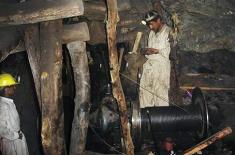
“Beyond Carbon: Why Pakistan Needs A New Climate Vocabulary”
Abdullah Hussain (@Abdulla99267510) Published May 13, 2025 | 01:07 AM

Ultimately, achieving net zero cannot be reduced to a funding checklist or development slogan. It requires a fundamental reimagining of how Pakistan manages its rural economy, food systems, urban planning, and waste
By Dr. Shafiq Ahmad Kamboh
As global financial institutions increasingly signal their willingness to fund climate action in Pakistan, the country stands at a defining crossroads. Will this moment mark a genuine leap toward environmental sustainability—or will Pakistan’s long-standing environmental lapses continue to undermine its climate promises?
Pakistan has committed to achieving net-zero emissions by 2050. Yet the facts tell a different story. Over the past two decades, the country’s greenhouse gas emissions have doubled—its share of global emissions rising from 0.45% to nearly 1%. This stark gap between rhetoric and reality forces a sobering question: is Pakistan structurally equipped to meet its climate goals?
To answer that, we must understand what “net zero” truly means. The concept involves reducing greenhouse gas emissions as much as possible and offsetting the remainder through carbon absorption measures, such as afforestation or technological carbon capture. But Pakistan’s emissions profile differs significantly from that of industrialized nations. While most developed economies grapple with carbon dioxide, Pakistan’s agrarian economy is a major emitter of two other potent gases: methane and nitrous oxide.
The country is currently the seventh-largest methane emitter in the world, primarily due to agriculture. According to a recent IMF report, the key sources of methane in Pakistan are livestock, rice cultivation, and mismanaged waste. Methane is particularly dangerous—it traps up to 28 times more heat than carbon dioxide. In Pakistan, the livestock sector is the primary culprit. Cows, buffaloes, goats, and camels—raised for milk and meat—release large quantities of methane both through digestion (a process known as enteric fermentation) and from decomposing manure.
Countries around the world have adopted effective strategies to curb such emissions. These include breeding low-emission livestock, improving feed digestibility, and introducing methane-inhibiting additives. Biogas systems that convert manure into clean energy have also gained traction. But in Pakistan, outdated practices persist. Successive governments celebrate local buffalo breeds as “black gold,” dreaming of dairy export booms—yet fail to implement meaningful strategies for climate-smart livestock management or biogas integration.
This is a missed opportunity. Climate finance could be channeled into supporting small-scale farmers—subsidizing eco-friendly feed, improved breeds, and biogas plants. Training in composting practices could also help transform open dung heaps into organic fertilizer, reducing emissions while improving soil health.
A similar story unfolds in Pakistan’s rice-growing regions. Paddy fields—especially in the Indus Basin—are another major methane source. Yet other monsoon-affected Asian countries like China, India, and Vietnam have successfully adopted mitigation measures such as alternate wetting and drying (AWD) irrigation, straw management techniques, and water-efficient rice varieties.
Despite being a water-scarce country, Pakistan continues to cultivate water-thirsty rice with little consideration for modern methods. Encouraging a shift to climate-resilient, less water-intensive crops must be made a national policy priority.
Urban waste is another methane time bomb. In cities across Pakistan, organic waste—food scraps, paper, and other biodegradable matter—decomposes without oxygen, releasing methane and carbon dioxide. Without proper systems to capture and reuse these gases, they escape into the atmosphere, fueling climate change and posing public health hazards. The Punjab government has made an important first step by initiating methane capture at the Mehmood Booti landfill in Lahore. But this model must be urgently replicated nationwide.
Methane, however, is only half the challenge.
Nitrous oxide—a greenhouse gas 275 times more potent than carbon dioxide—is also on the rise. It is primarily released from the overuse of nitrogen-based fertilizers (like urea and ammonium nitrate) and from livestock waste. Pakistan now ranks sixth in the world for nitrous oxide emissions—an alarming statistic, especially as this gas can persist in the atmosphere for over a century and even contributes to ozone layer depletion.
Meeting growing food demands makes fertilizer use seem unavoidable. Yet, smarter, climate-conscious farming practices offer viable alternatives. These include balanced fertilizer application, the promotion of bio-fertilizers and organic farming, composting crop residues instead of burning them, and large-scale farmer education campaigns.
To align climate action with local socio-economic realities, Pakistan must break away from imported jargon and develop a home-grown climate dictionary. Terms like “decarbonisation” may be globally popular, but they do not adequately capture Pakistan’s unique emissions profile. Instead, phrases such as “demethanisation” and “denitrogenation of the economy”—though unconventional—better reflect the country’s urgent priorities. Embedding such terms into media narratives and public discourse can substitute a deeper understanding of what net zero actually requires in the Pakistani context.
Ultimately, achieving net zero cannot be reduced to a funding checklist or development slogan. It requires a fundamental reimagining of how Pakistan manages its rural economy, food systems, urban planning, and waste. Climate finance presents a historic opportunity—but only if the country addresses its systemic issues with honesty and urgency.
The road to net zero must begin by confronting inconvenient truths. Only then can Pakistan turn its climate vulnerabilities into climate resilience.
About author:
Dr. Shafiq Ahmad Kamboh is an academic, researcher, and policy analyst specializing in environmental action and science communication.

Related Topics
Recent Stories

“Beyond Carbon: Why Pakistan Needs a New Climate Vocabulary”

AJK President lambastes India for deliberately targeting civilian populations on ..

FTT praises government to recognize billions of tax due to illicit cigarette tar ..

Youm-e-Tashakur celebrated to pay tribute to Pak Army at Liaquat Bagh

Imam of mosque killed in targeted attack in Khyber district

Chinese academic delegation visits NLPD

Pakistan achieves success on all fronts: Minister for Defense Khawaja Muhammad A ..

Woman killed, 6 injured in motorway accident

Sindh Police to launch Karachi’s first government driving training school

Pakistan emerged stronger after crisis with India: Asim Iftikhar

Two mine workers die, 7 fall unconscious in Lakhra coalfield's mine

Tax office seals 3 wine shops lacking PoS system integration
More Stories From Blog
-

“Beyond Carbon: Why Pakistan Needs a New Climate Vocabulary”
3 minutes ago -

AMAN 2025: Navigating Peace by Pakistan through Naval Blueprint in Indian Ocean
3 months ago -

Global outrage over Trump’s call for Gaza’s forced occupation
3 months ago -

Pakistan Navy’s contribution to regional maritime security
3 months ago -

Falling Walls Science Summit 2024: Tackling climate, health and energy challenges
6 months ago -

The Omniscient Judiciary: Masters of All in the Hills Republic
9 months ago
-

"Painting Philosophy of Life"
9 months ago -
Unlocking Pakistan's Connectivity: Enablement of Next-Gen Wi-Fi for a Sustainable Tomorrow
12 months ago -
Addressing E-Waste Challenges in the Telecommunication Sector: A Path to Sustainable Development
12 months ago -
Role of Schools in Promoting Online Safety for Children
12 months ago -
Bridging the Digital Divide: How 5G Technology Can Drive Sustainable Development in Pakistan
12 months ago -
Collaborative Investment Opportunities in ICT to Boost Pakistan’s Economy
12 months ago






